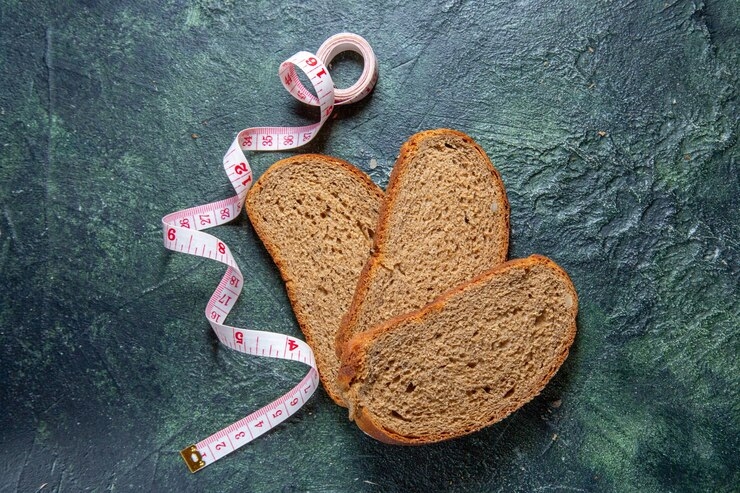9 Types of Bread You Should Eat for Weight Loss

Did you know that Americans consume about 53 pounds of bread per person each year?
With bread being a regular part of our diets, it’s essential to choose the right type, especially if you're aiming for weight loss. Despite common misconception, not all bread is your enemy when trying to shed some pounds. In fact, certain types can actually be beneficial.
Let's explore nine kinds of bread that can help you on your weight loss journey.
Can Breads Really Help in Losing Weight?
Eating whole wheat bread in the right amount can give you the energy you need without causing weight gain. However, it's important to not eat too much, as that can lead to extra fat being stored in your body. Whole grain breads can be a good part of your diet, but it's all about the amount you take. Making a homemade sandwich with salad or grilled chicken is a healthy choice.
Varieties of Bread to Consider for Weight Loss
1. Whole Grain Bread:
One of the best options for weight loss is whole-grain bread. Unlike refined grains, whole grains include all parts of the grain – the bran, germ, and endosperm. This means they retain their nutrients, including fiber, vitamins, and minerals.
Fiber is particularly important for weight loss as it helps keep you feeling full, which can prevent overeating. Additionally, whole grain bread has a lower glycemic index, meaning it doesn't spike your blood sugar levels as much as white bread.
2. Rye Bread:
Rye bread is another excellent choice for those looking to shed pounds. It's usually thicker than wheat bread, meaning it's more filling.
Rye also has a unique combination of fibers that can help with satiety, making you feel full for longer. Rye bread can also help improve digestion, due to its high fiber content.
3. Sourdough:
Sourdough bread is made by a fermentation process that can help make your stomach and intestines healthier.
Having a healthy stomach and intestines is really important for weight loss because it changes the way you digest food and take in nutrients. Also, the way sourdough is made lowers its effect on your blood sugar, which helps keep blood sugar levels steady.
4. Oat Bread:
Oat bread is made from whole oats and whole wheat flour, making it a great source of fiber. This fiber is good for your digestion and also makes you feel full, which can help you eat less.
Plus, oat bread has natural nutrients that are good for your overall health. It's a tasty and healthy choice for your meals, especially if you're trying to watch your weight.
5. Ezekiel Bread:
Ezekiel bread is a special, healthy bread made from sprouted grains and beans. These ingredients are sprouted before being used, which increases their nutritional value. This type of bread is higher in protein than most other bread, helping in muscle building and satiety.
It also contains more fiber, vitamins, and minerals, making it a wholesome choice for your meals.
6. Flaxseed Bread:
Flaxseed bread, which has whole flaxseeds or flaxseed meal, is full of omega-3 fatty acids. These good fats help reduce swelling in the body and can help with losing weight. Flaxseed bread is also packed with fiber, which is good for your digestive system and helps you feel full longer.
Additionally, this bread can help lower cholesterol and keep your heart healthy, making it a great choice for an overall healthy diet.
7. Almond Flour Bread:
For those following a low-carb diet, almond flour bread is a great option. It's made from ground almonds, which makes it high in protein and healthy fats while being low in carbohydrates.
This combination can help keep you feeling full and satisfied, reducing the chance of snacking on unhealthy foods.
8. Multigrain Bread:
Multigrain bread, as the name suggests, is made from a mixture of different grains. This variety ensures you get a broad range of nutrients, including fiber, vitamins, and minerals. Look for multigrain bread that lists whole grains as its primary ingredients to get the most health benefits.
9. Gluten-Free Bread:
For people with gluten sensitivities or celiac disease, gluten-free bread can be a good option. These bread are usually made from alternative flour like rice, almond, or coconut flour.
While not all gluten-free breads are automatically healthy, many options are available that are high in fiber and nutrients.
Bonus Tip:
A common question among bread lovers is how to keep bread fresh. The key is to store it properly. For most types of bread, a breadbox or airtight container is ideal. Doing this will prevent it from becoming dry too fast.
If you don't plan to eat the bread within a few days, consider slicing it and freezing it. This way, you can thaw or toast slices as needed, reducing waste and ensuring you always have fresh bread on hand.
Conclusion:
In conclusion, bread can indeed be included in a weight-loss diet. The key is to choose the right types of bread – those that are high in fiber, and nutrients are satisfying.
By including these varieties like whole-grain bread, rye, and sourdough into your diet, you can enjoy the taste and comfort of bread while still working towards your weight loss goals.
Remember, moderation and balance are essential in any healthy diet, so enjoy these breads in proper portions as part of a balanced diet.
- Industry
- Art
- Causes
- Crafts
- Dance
- Drinks
- Film
- Fitness
- Food
- Games
- Gardening
- Health
- Home
- Literature
- Music
- Networking
- Other
- Party
- Religion
- Shopping
- Sports
- Theater
- Wellness
- News


